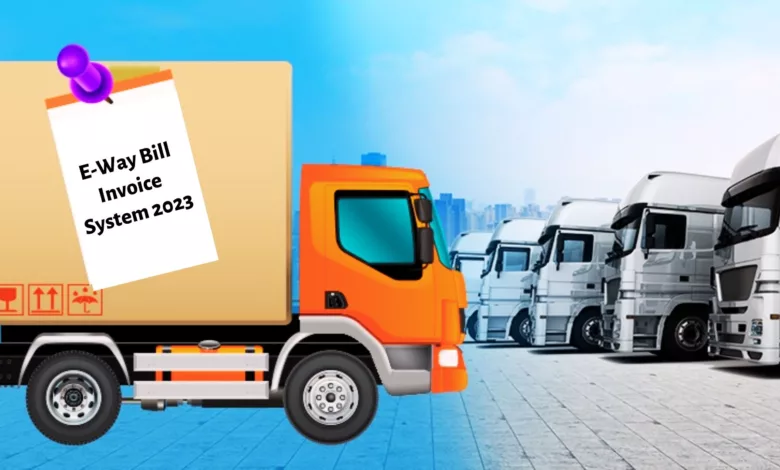eWay Bill and Rules for eWay Bill Generation

“E-Way Bill” is an electronic document that is required for the transfer of products costing more than Rs. 50,000 from one location to another in India, with the exception of Delhi. If the products are worth more than Rs. 1 Lakh, an e-way bill must be issued in order to move them within Delhi.
Regardless of whether the delivery of the products is intrastate or interstate, this document must be generated online. Every state and union territory in India will accept the e-way bill that was generated in any one of them.
When is an eWay Bill Generated?
An eWay bill will be generated whenever items are moved in a conveyance or vehicle with a value greater than Rs. 50,000 (either per invoice or as the total of all invoices in a vehicle or conveyance).
Following are the cases in which an eWay Bill is generated:
- Associated to a “supply”
- Beyond just providing a “supply” ( say a return)
- A result of an inward “supply” by an unregistered individual
For this use, a supply could be any of the following:
- A business-related service that is provided in exchange for money.
- A service provided for cash that would not be reimbursed in the normal course of business
- A gift offered (without payment)
The term “supply” generally refers to a:
- Sale: The distribution of goods in exchange for cash.
- Branch transfers are a type of transfer.
- Instead of using money as payment while bartering or exchanging, goods are used.
Therefore, for all of these different sorts of movements, eWay Bills have to be generated on the common platform. Even if the consignment of goods has a value of less than Rs. 50,000, the e-Way bill must be generated mandatorily for specific specified goods:
- Movement of Inter-State Goods by the Principal to the Registered Job-Worker
- Dealers are not subject to GST service registration if they move handicrafts between states.
Who Generates An eWay Bill?
Under the GST Service Regime, the e-way bill must be produced by:
- Every registered individual who moves consignment goods
- pertaining to a supply (such as sales); or
- for reasons unrelated to supply (such as sales returns or branch transfers), or
- because of incoming supply from an unlicensed individual
- Every unregistered individual who moves goods.
How to Make an E-Way Bill on the Portal
- Create an online eWay Bill at e-waybill. nic. in
- It is necessary for you to enter your user name and passcode. There will be a successful login for the E-way bill.
- The options for rejecting, cancelling, etc. will be visible in the left panel of the screen on the waybill system.
- Alerts and notifications are displayed on the right panel of the screen.
Small taxpayers who don’t have access to the internet are often the ones that create e-way invoices via SMS. e-Way bill production by SMS is best for businesses with a low volume of transactions.The SMS e-way bill generating facility can also be used by taxpayers in an emergency, like at late night. The three main tasks involved in sending an e-way bill by SMS are as follows:
- Get the E-way bill ready
- The vehicle’s specifications need to be updated
- Bill cancellation for eWay
How to Verify eWay Bill?
- The authorised official verifies paperwork and/or examines the goods.
- The person in charge must present documents pertaining to the conveyance and goods.
- If there are no inconsistencies, the transportation will continue after the official in charge has verified these documents.
What is the Date of Applicability of e-way bill in GST?
For the transfer of goods between states, the e-way bill under the GST Service Regime is applicable as of April 1, 2018.
From April 15 to June 16, 2018, e-way bills were gradually introduced to facilitate the transportation of products throughout the state. E-way bills are now accepted in all 50 states as the phased roll-out has been finished.
The Way Bill that was necessary under the VAT Regime for the movement of goods has been replaced by the E-Way Bill under the GST Services Regime. A physical document called a “way bill” had to be created for the movement of goods under the VAT Regime. An electronically generated document in the VAT Regime has now taken the role of the physical document.
Validity of e-Way Bill
Based on the distance the goods have travelled, an e-way bill is valid for the durations listed below. Validity is determined by the date and time the e-way bill was generated.
| Type of conveyance | Distance | Validity of EWB |
| Excluding over-dimensional Freight | <200 Kms | 1 Day |
| For each additional 200 km, or portion thereof | additional 1 Day | |
| Including over-dimensional Freight | <20 Kms | 1 Day |
| For each additional 200 km, or portion thereof | additional 1 Day |
The validity of an e-Way bill may also be extended. In order to extend the validity of an Eway bill, the generator must do so either eight hours before its expiration or eight hours immediately following it.
Documents Required To Generate eWaybill System
- Consignment invoice/Challan/Bill of supply
- Road transport – Vehicle number or Transporter ID
- Transport by air, rail,or ship – Transport document number, Transporter ID and date
In principle, Electronic Way Bill (E-Way Bill) is a compliance mechanism whereby the person initiating the movement of goods uploads the necessary information before the movement of goods begins and generates an e-way bill on the GST service portal.




